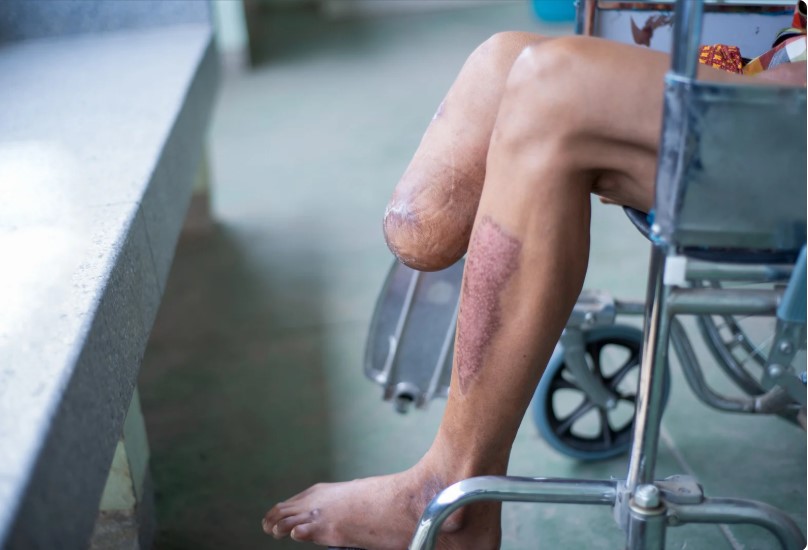Shoulder pain can significantly impact daily activities, making even simple tasks feel challenging. This guide to Shoulder Injuries & Pain Treatment will focus on two common issues: rotator cuff tears and frozen shoulder. Understanding these conditions, their causes, symptoms, and treatments can make a substantial difference in finding the right solutions for lasting pain relief.
What Is the Rotator Cuff?
The rotator cuff is a group of muscles and tendons that stabilize the shoulder joint and allow a wide range of arm movements. When it comes to Shoulder Injuries & Pain Treatment, the rotator cuff is a frequent area of concern, as it’s prone to injuries from overuse, age, or trauma. Recognizing the structure and function of the rotator cuff helps clarify why injuries to it can lead to chronic shoulder pain and mobility limitations.
Understanding Rotator Cuff Tears
Rotator cuff tears are a leading cause of shoulder discomfort and may result from sudden injury, repetitive strain, or gradual degeneration with age.
- Causes of Rotator Cuff Tears: Injuries can arise from sports, lifting, or simply the wear-and-tear of daily activities. For effective Shoulder Injuries & Pain Treatment, it’s essential to know the root cause, as this helps determine the best approach.
- Symptoms to Watch For: Typical symptoms include shoulder pain, weakness, difficulty lifting or reaching, and a reduced range of motion. Recognizing these symptoms early on is vital to Shoulder Injuries & Pain Treatment as early diagnosis improves outcomes.
- Types of Rotator Cuff Tears: Tears can be partial or complete, with the former involving partial tendon damage and the latter a complete tear. Additionally, tears can be classified as traumatic or degenerative, affecting the approach to Shoulder Injuries & Pain Treatment.
- Diagnosis: Doctors usually diagnose rotator cuff tears with physical exams, MRIs, or ultrasound imaging, which provide a comprehensive view of the tear and inform the best Shoulder Injuries & Pain Treatment plan.
What Is Frozen Shoulder?
Frozen shoulder, also known as adhesive capsulitis, is a painful condition marked by stiffness and a reduced range of motion.
- Phases of Frozen Shoulder: Frozen shoulder progresses in three stages: the freezing phase, where pain and stiffness worsen; the frozen phase, where stiffness peaks; and the thawing phase, where movement gradually improves. Each stage may require different Shoulder Injuries & Pain Treatment approaches.
- Causes and Risk Factors: Frozen shoulder often develops due to prolonged immobility, diabetes, thyroid issues, or other health factors. Recognizing these risk factors is essential for preventative Shoulder Injuries & Pain Treatment.
- Symptoms: People with frozen shoulder experience persistent pain and difficulty with shoulder movements, which can significantly impact daily activities. By focusing on the right Shoulder Injuries & Pain Treatment, individuals can regain mobility and reduce discomfort.
How Rotator Cuff Tears Can Lead to Frozen Shoulder
In many cases, untreated rotator cuff tears or inadequate rehabilitation can increase the risk of frozen shoulder. When a shoulder injury limits movement for an extended period, it can lead to stiffness and ultimately frozen shoulder. Proper Shoulder Injuries & Pain Treatment following a rotator cuff injury can help prevent this complication by promoting mobility and strengthening the joint.
Effective Treatment Options for Rotator Cuff Tears and Frozen Shoulder
A variety of Shoulder Injuries & Pain Treatment options are available to address both rotator cuff tears and frozen shoulder.
- Physical Therapy: Physical therapy plays a crucial role in Shoulder Injuries & Pain Treatment by using specific exercises to restore strength and flexibility. For both rotator cuff tears and frozen shoulder, physical therapy is often a foundational part of the recovery plan.
- Pain Management: Pain relief options, including anti-inflammatory medications, corticosteroid injections, and ice or heat therapy, are important aspects of Shoulder Injuries & Pain Treatment for reducing pain and inflammation, allowing patients to focus on rehabilitation.
- Surgery Options: When tears are severe, surgical repair may be necessary. Various techniques, such as arthroscopic surgery or open repair, provide targeted Shoulder Injuries & Pain Treatment, especially in cases of complete tears that do not respond to other treatments.
- Alternative Therapies: Some patients explore alternative therapies like acupuncture, massage, or gentle stretching as part of their Shoulder Injuries & Pain Treatment. These options can complement traditional treatments by promoting relaxation and reducing muscle tension.
Preventive Measures and Self-Care Tips for Shoulder Health
Preventive care is key to avoiding the need for extensive Shoulder Injuries & Pain Treatment. Simple changes can strengthen the shoulder, improve flexibility, and reduce the risk of injury.
- Daily Shoulder Exercises: Regular exercises, such as shoulder rotations, resistance band workouts, and stretches, support shoulder health and prevent future injuries, contributing to ongoing Shoulder Injuries & Pain Treatment.
- Proper Posture: Maintaining good posture reduces shoulder strain. For people frequently using computers or engaging in repetitive tasks, posture-focused Shoulder Injuries & Pain Treatment practices help prevent overuse injuries.
- Lifestyle Adjustments: Avoiding repetitive heavy lifting or sudden shoulder movements can prevent rotator cuff tears and frozen shoulder. Emphasizing safe lifting techniques is another proactive Shoulder Injuries & Pain Treatment strategy.
- When to Seek Help: If pain persists or worsens, it’s crucial to seek professional advice. Early intervention is often the best course for effective Shoulder Injuries & Pain Treatment, improving recovery times and reducing the chance of complications.
How to Avoid Re-injury and Future Shoulder Pain
Once shoulder pain has been addressed, it’s important to adopt practices to avoid re-injury. Proper Shoulder Injuries & Pain Treatment extends beyond initial recovery and includes long-term preventive care.
- Gradual return to normal activities after injury, under professional guidance, supports sustained shoulder health.
- Progressive physical therapy tailored to individual needs reduces strain and supports muscle strength.
- Avoiding repetitive stress on the shoulder and modifying activities helps reduce the chance of further injuries, making these practices essential parts of ongoing Shoulder Injuries & Pain Treatment.
Takeaway
Managing shoulder pain from conditions like rotator cuff tears and frozen shoulder is possible with the right approach to Shoulder Injuries & Pain Treatment. Understanding these injuries, their treatments, and preventive measures helps people take control of their shoulder health. For those dealing with ongoing shoulder issues, early intervention and a tailored treatment plan can be life-changing. Embrace these strategies to support pain-free shoulder movement and a healthier, more active life.










